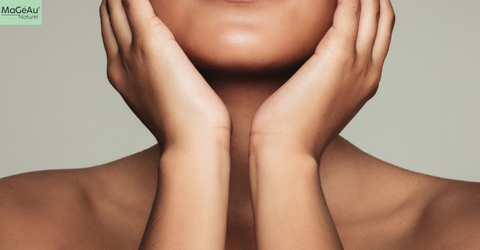We’ve all been there, staring at the mirror, wondering why our skin is suddenly misbehaving. Is it acne? Is it rosacea? Or is it just a bad skin day? If you’ve been struggling with persistent redness, bumps, or flare-ups that just won’t go away, you might need professional help. Here are three warning signs that it’s time to see a dermatologist.
1. Your Skin Reacts to Almost Everything
Does your skin turn red after a sip of wine? Does it sting when you apply skincare products? Do spicy foods leave your face looking like a tomato? If so, you might be dealing with rosacea rather than acne.
Rosacea makes your skin ultra-sensitive to triggers like alcohol, caffeine, heat, and even stress. Unlike acne, which is caused by clogged pores and bacteria, rosacea is an inflammatory condition that affects blood vessels in the skin. If your skin reacts dramatically to things that never used to bother you, it’s time to book an appointment with a dermatologist.
How to Soothe Sensitive Skin
Use a gentle cleanser with magnesium, vitamin E, and beetroot extract to cleanse without stripping your skin.
Avoid harsh exfoliants like scrubs and strong acids that can make inflammation worse.
Apply a hydrating body lotion with Shea butter, aloe vera, and magnesium to keep your skin barrier strong and calm.
2. Your Breakouts Look Different from Typical Acne
Acne usually presents as blackheads, whiteheads, or inflamed pimples. But if your “acne” consists of tiny red bumps that never seem to come to a head, it could be rosacea instead. Rosacea breakouts tend to appear in clusters, often across the cheeks, nose, and forehead.
Unlike acne, these bumps aren’t caused by oil buildup but rather by inflammation and broken blood vessels. If your skin is red, bumpy, and feels warm to the touch, it’s likely not just acne, it’s time to consult a dermatologist.
How to Manage Redness and Bumps
Swap out harsh foaming cleansers for a gentle cleanser with magnesium, vitamin E, and beetroot extract.
Use a hydrating shower gel containing grape seed oil, aloe vera, and turmeric to prevent irritation and lock in moisture.
Apply a nourishing body oil with grape seed oil, magnesium, and vitamin E to help strengthen your skin barrier and reduce inflammation.
3. Your Skin Has a Permanent Red Flush
If your face looks like you’re constantly blushing, even when you haven’t been exercising or sitting in the sun, it could be rosacea. While acne can cause redness from inflamed breakouts, rosacea tends to cause long-lasting redness that doesn’t go away.
Rosacea redness is due to dilated blood vessels under the skin’s surface. Over time, if left untreated, this redness can become permanent. Many people mistake this for persistent acne scarring, but no amount of acne treatment will help if the underlying issue is rosacea.
How to Calm Persistent Redness
Use a soothing hand lotion with cacao butter, aloe vera, magnesium, and vitamin E to soothe skin and strengthen its defences.
Hydrate your lips with a balm containing Shea butter, vitamin E, and candelilla wax to protect them from dryness and irritation.
Avoid skincare products with alcohol, menthol, or strong fragrances, these can make redness worse.
When to See a Dermatologist
If any of these signs sound familiar, it’s best to consult a dermatologist. The earlier you seek professional advice, the easier it is to manage your skin. Rosacea, in particular, is a chronic condition that can worsen over time if left untreated.
A dermatologist can help you:
- Identify whether you have acne, rosacea, or both.
- Recommend the right treatments, whether it’s prescription creams, laser therapy, or lifestyle changes.
- Personalise a skincare routine to prevent flare-ups and keep your skin healthy.
When to Seek Expert Help for Your Skin Concerns
It’s easy to assume that every breakout is acne, but if your skin is unusually red, sensitive, or inflamed, it could be rosacea instead. Knowing the difference is key to treating your skin properly.
Meanwhile, using calming, hydrating skincare products can make a big difference. Look for ingredients like magnesium, vitamin E, aloe vera, and shea butter to nourish and protect your skin. And if you’re ever in doubt, don’t hesitate to see a dermatologist, it’s the best investment you can make for your skin health!





Comments (0)
There are no comments for this article. Be the first one to leave a message!